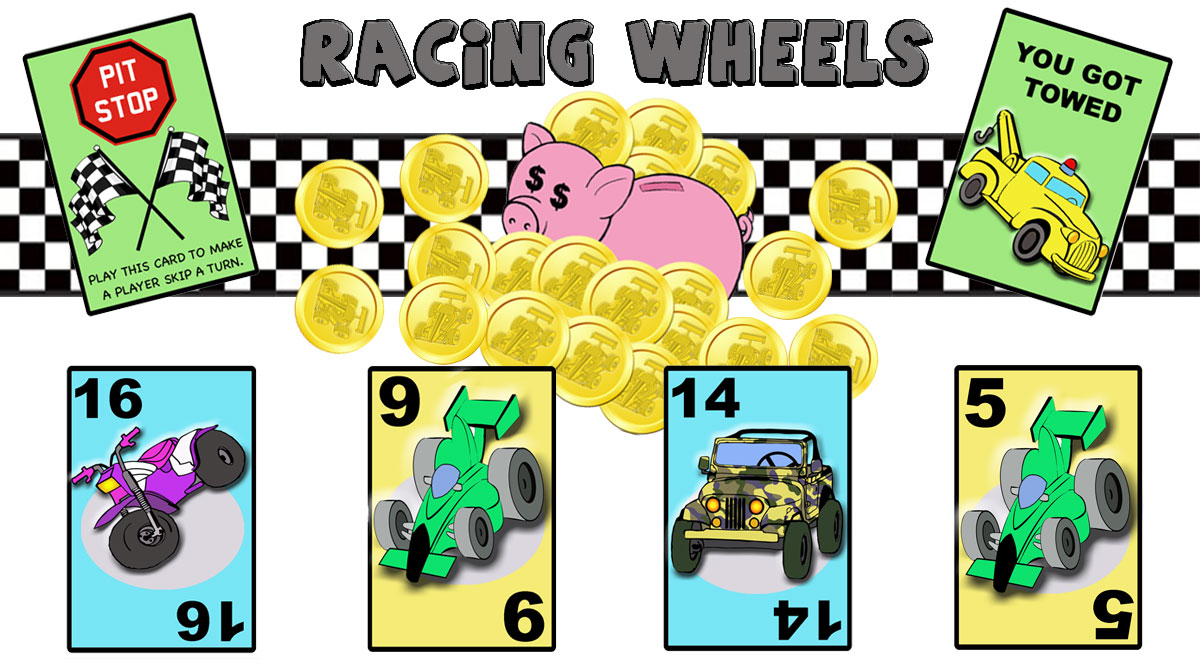Ages 6 and up
Racing Wheels is a multiplayer, competitive card game that students can play to practice:
- addition to 20, mental math
- skip count by 2, 3 and 5
- Less than and greater than
Playing Racing Wheels helps children (and adults) improve their mental math skills, sharpen their observing skills, strengthen their working memory, and apply strategic thinking. It’s a fun game to play with family and friends at home or in the classroom. The players get to buy their vehicles with their coin cards and then race them.
Stage 1- Buy your wheels
In the first stage of the game, the players buy their vehicles using their coin cards. (green cards)
The goal is to get as many vehicles as you can.
Stage 2 – Race
In the second stage, they get to race their vehicles (blue and yellow cards) and find out who is first, second, third. (blue are even numbers and yellow are odd numbers)
The game is free to print and play.

You can print the cards on card stock and cut them. Get the children to help! If you don’t have a color printer you can ask the children to color the vehicles themselves and give them a personal style.
There are a total of 90 cards in the game,
36 coin cards,
45 vehicle cards,
3 pit stop cards,
3 “you got towed “cards,
3 piggy bank cards
SET UP
Separate the cards in two decks. The blue and yellow ones (vehicle cards) in one deck and the green ones (coins + pit stop +” you got towed”+ piggy bank) in another.
Shuffle the vehicle cards deck and place 6 cards down in the middle facing up.

Shuffle the green cards deck and deal 4 to each player. Place the rest of the pile face down to be used as a draw pile.
(you can print the vehicles and the coins cards on different color paper so that the back of the cards are different or print the backfield at the back of the green cards)
PLAY
Stage 1 – Buy your wheels
The youngest player plays first.
On their turn, the players take one of these actions.
- Play 2 or more coin cards that add up to the number of a vehicle to “buy ” it. The Piggy Bank card can replace any number 1-10 but cannot be used by itself.
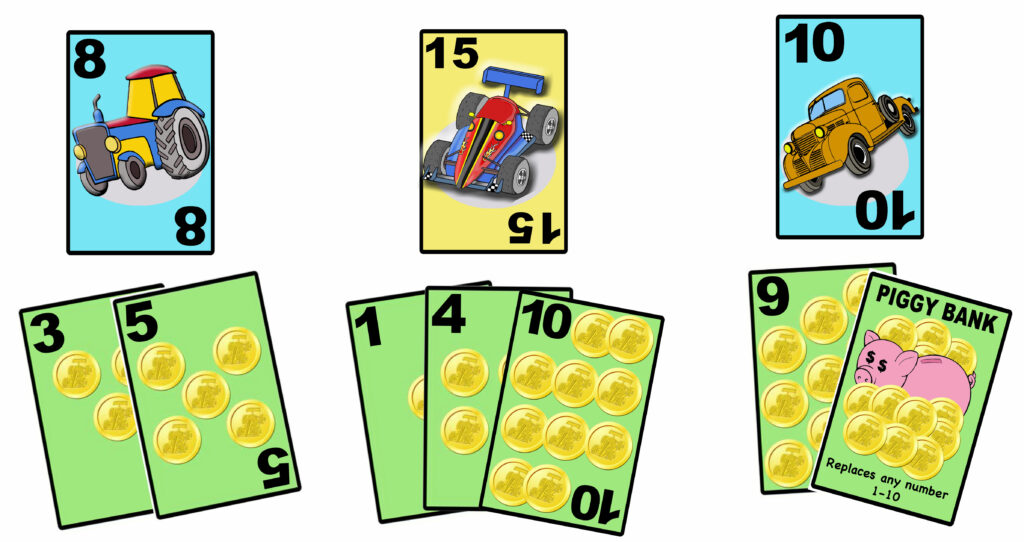
- Draw a new (green) coin-card and wait for their next turn.
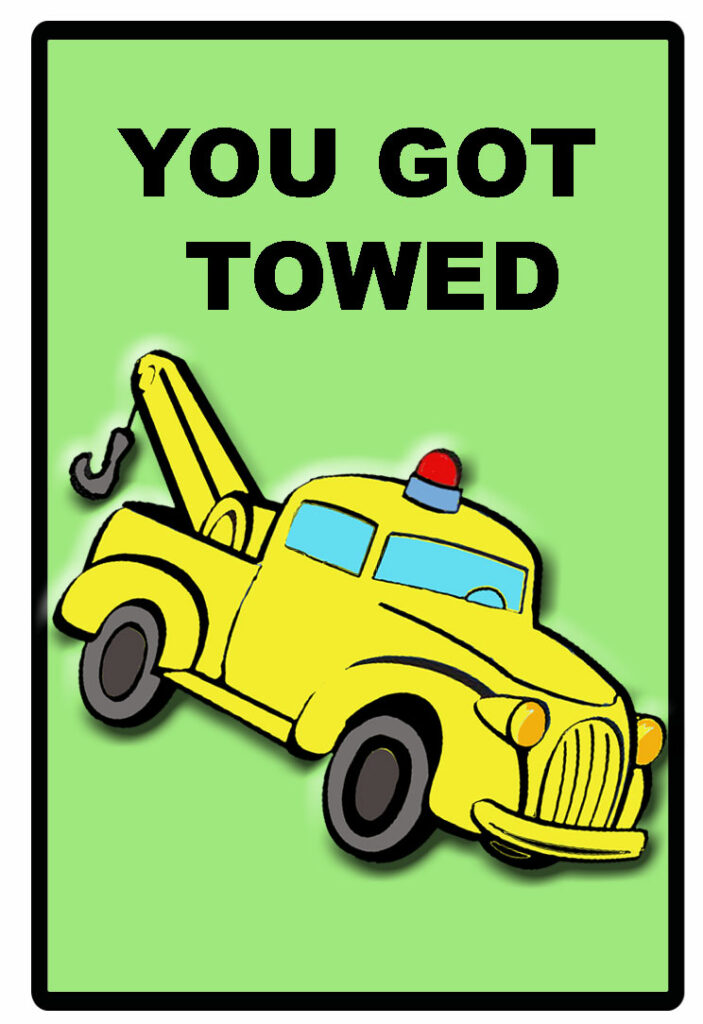
- Play a “you got towed”card to ask any player for one of their vehicles. ( they choose )
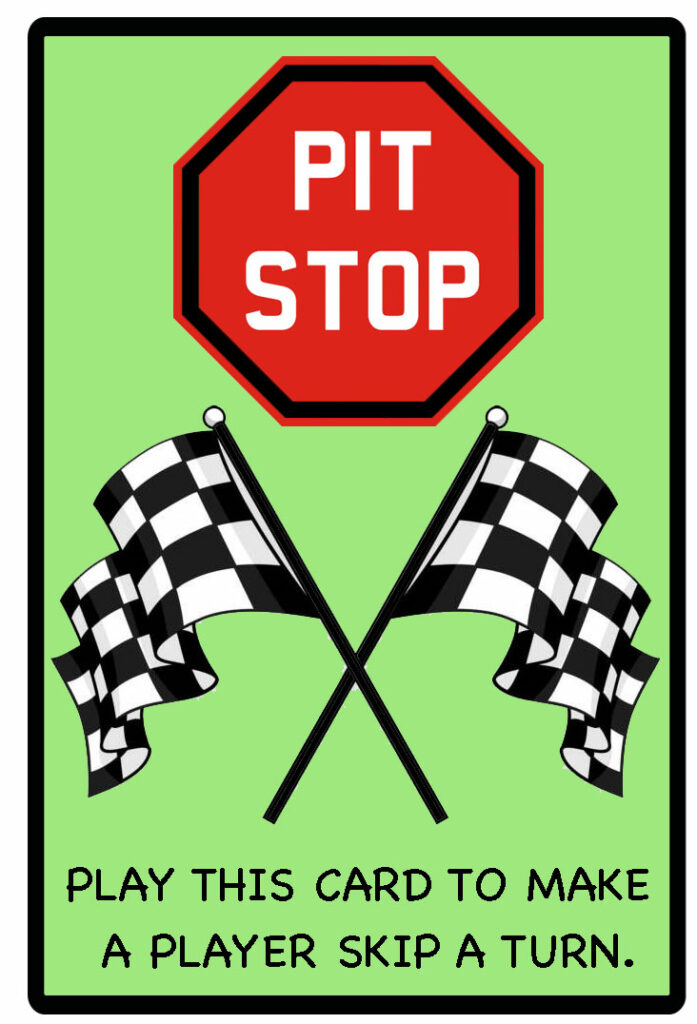
The “Pit stop” card can be played at any time to make a player skip their turn. Make sure you play the “Pit stop” card before the player starts their turn.
Every time a player takes a vehicle a new one must be placed down.
Stage 2 – Dice Roll Race
Once all the vehicles are finished the players race their vehicles using a 6- face dice.
Each player chooses one of their vehicles to race and they keep it in front of them in the middle.
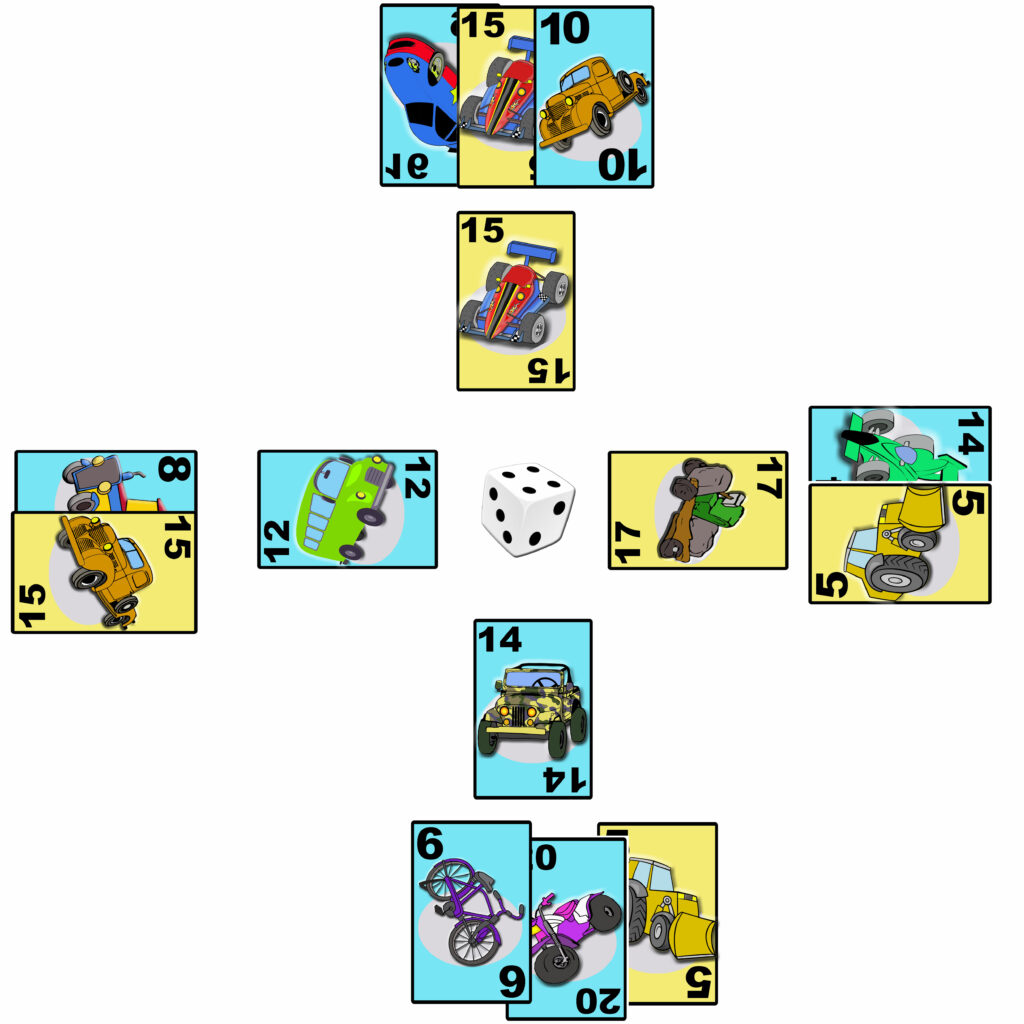
A player rolls a 6-face dice and the roll tells which vehicles won the race.
For example:
If the dice rolls 1 the odd number vehicles win this race.
The even ones are out. (The players/owners have to discard them.) The winning vehicles go back in the players'(owners’) pile and all the players choose their next vehicle to race. (they can choose the same one again)
Another player rolls the dice.
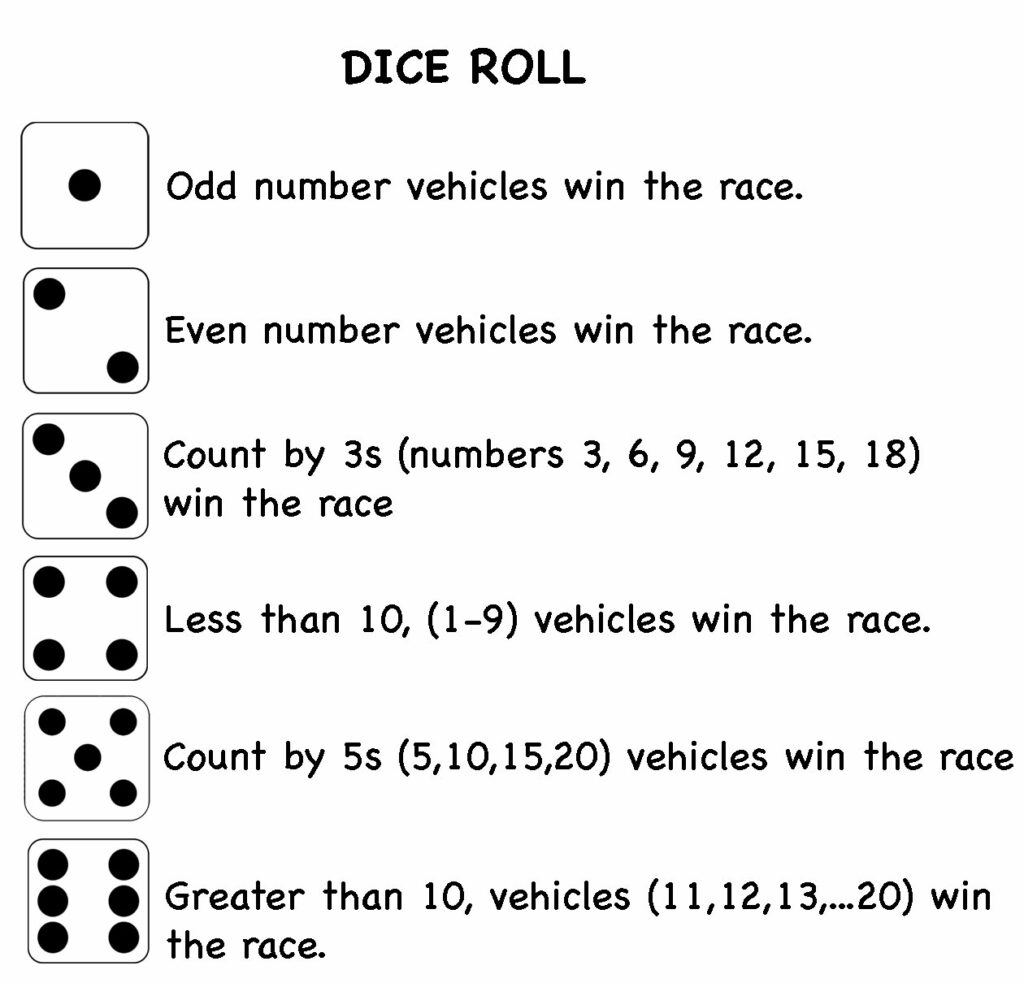
You can use a number line to help with the dice roll race.
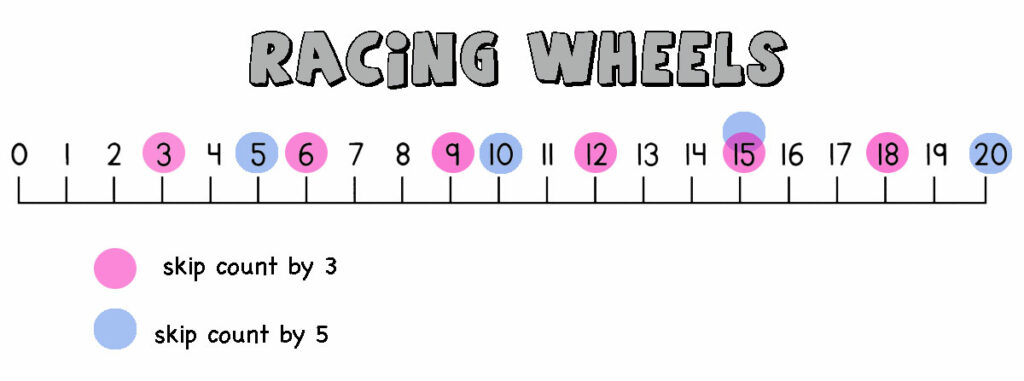
Slowly the players will be left with fewer vehicles so fewer vehicles will be in the race. If a player’s vehicles finish he is out.
The player with the last vehicle in the race is the golden trophy winner, the second last out is the silver trophy winner and the third last out is the bronze trophy winner. (You can print the trophy cards)
Shorter games
You can choose to play only stage 1 or stage 2 at a time. The winner for stage 1 is the player with most vehicles. You can also use fewer vehicles for a smaller number of players. If you want to go straight to stage 2 just deal an equal number of vehicles to each player and start the dice roll. The winner is the player with the last vehicle in the race.
VARIATIONS
You can change the dice roll instructions based on the grade level. For example, you can make it more challenging by, assigning roll 4 to “skip count by 4”, or easier by assigning roll 4 to “less than 5”.
Learning opportunities
Stage 1 is good for practicing addition to 20. There is a lot of mental math involved in this stage.
Stage 2 is an opportunity to discuss odd and even numbers, skip counting by 2, 3 and 5 and less than and greater than concepts.
Download the cards and instructions here.
Print the file coin_cards1 3 times

